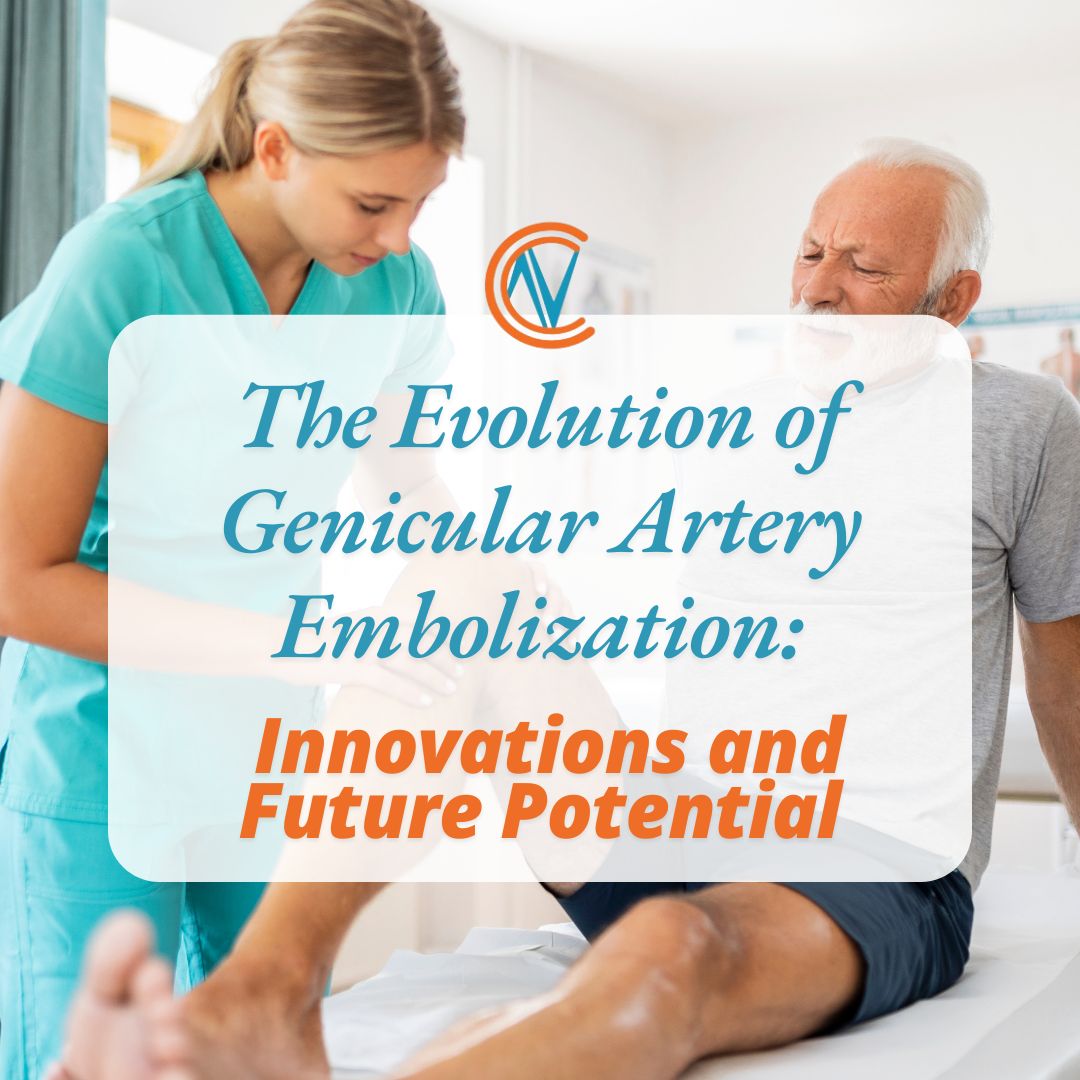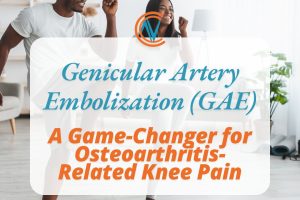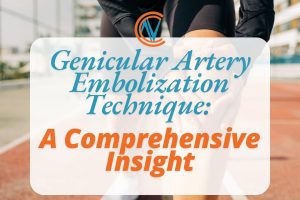
The Evolution of Genicular Artery Embolization: Innovations and Future Potential
As medical science advances, so does the quest for innovative solutions to manage chronic pain and degenerative conditions. Among these breakthroughs, Genicular Artery Embolization (GAE) has carved a niche as a transformative procedure for managing knee pain, particularly in patients with osteoarthritis. While its primary focus has been on pain relief, the evolution of GAE has expanded its applications, refined its techniques, and opened new avenues for future exploration. This article delves into the innovative aspects of GAE, its evolving methodologies, and the exciting possibilities on the horizon.
A Paradigm Shift: From Pain Management to Comprehensive Care
Initially conceptualized as a targeted approach to alleviate knee pain, GAE has grown to address broader issues within joint health. The shift from merely managing symptoms to tackling inflammation at its vascular source has redefined how physicians approach joint degeneration.
- Early Applications: Focused solely on reducing pain through vascular occlusion.
- Evolving Goals: Enhancing joint function, delaying progression of osteoarthritis, and potentially complementing regenerative therapies.
Innovations in Embolic Materials
One of the most significant advancements in GAE is the development of sophisticated embolic agents. These materials are designed to improve precision, efficacy, and patient outcomes.
- Microspheres: Biocompatible and tailored to block specific blood vessels without affecting surrounding tissues.
- Drug-Eluting Particles: Deliver anti-inflammatory or regenerative compounds directly to affected areas while occluding vessels.
- Bioresorbable Agents: Temporary materials that dissolve after achieving their therapeutic effect, reducing long-term risks.
Enhanced Imaging Techniques
Accurate imaging is at the heart of successful GAE procedures. Innovations in imaging technology have revolutionized the ability to identify and target the exact blood vessels contributing to inflammation.
- Cone-Beam CT: Provides detailed, real-time 3D imaging during the procedure.
- Fluoroscopic Guidance: Enables precise catheter placement and embolization.
- Artificial Intelligence (AI): Emerging AI tools assist in mapping vascular structures, improving accuracy, and reducing procedure times.
Expanding Clinical Applications
While GAE is primarily used for osteoarthritis, its success has sparked interest in applying the technique to other conditions:
- Post-Traumatic Knee Pain: GAE is being explored as a treatment for inflammation and pain following knee injuries.
- Rheumatoid Arthritis: Researchers are investigating its potential to manage vascular-driven inflammation in autoimmune conditions.
- Sports Injuries: Targeted embolization may help athletes recover from repetitive strain injuries without compromising performance.
GAE in Combination Therapies
One of the most promising trends is integrating GAE with other treatment modalities to amplify results. This multi-faceted approach is transforming how joint health is managed.
- Stem Cell Therapy: Combining GAE with stem cell injections to promote cartilage regeneration while reducing inflammation.
- Physical Therapy: Enhanced outcomes when GAE reduces pain enough to allow active participation in rehabilitation.
- Platelet-Rich Plasma (PRP): Synergistic effects when PRP injections are used alongside GAE to support tissue healing.
Patient-Centered Advancements
As GAE continues to evolve, patient experience remains a central focus. Innovations are improving not only clinical outcomes but also the overall journey for those undergoing the procedure.
- Shortened Procedure Times: Advances in catheter design and embolic delivery systems reduce time spent in the operating suite.
- Minimized Discomfort: Enhanced local anesthesia techniques and smaller instruments lead to a more comfortable experience.
- Rapid Recovery Protocols: Streamlined post-procedure care ensures patients can return to daily activities within days.
Challenges and Areas for Development
Despite its successes, GAE is not without challenges. Addressing these hurdles is critical to unlocking its full potential.
- Standardization of Protocols: Variability in techniques across practitioners necessitates standardized guidelines for optimal outcomes.
- Long-Term Data: More research is needed to understand the durability of GAE results over decades.
- Access and Awareness: Increasing availability in underserved areas and educating patients and clinicians about its benefits remain priorities.
The Role of Interdisciplinary Collaboration
The future of GAE lies in collaboration across specialties. Interventional radiologists, orthopedic surgeons, pain specialists, and regenerative medicine experts are working together to push the boundaries of what GAE can achieve.
- Educational Initiatives: Training programs and workshops ensure consistent, high-quality care.
- Research Collaborations: Joint efforts accelerate the development of new applications and technologies.
- Patient Advocacy: Multidisciplinary teams ensure patient voices are central in shaping treatment approaches.
Emerging Technologies on the Horizon
The future of GAE is bright, with several emerging technologies poised to enhance its efficacy and scope:
- Robotic-Assisted Embolization: Improving precision and reducing variability between procedures.
- Nanotechnology: Development of nano-sized embolic agents for ultra-targeted therapy.
- Biometric Monitoring: Wearable devices to track recovery and detect inflammation early.
Global Perspectives: GAE Around the World
As GAE gains international traction, its implementation varies across regions. Examining these differences provides insights into how the procedure can be optimized globally.
- North America: Focus on advanced imaging and combination therapies.
- Europe: Emphasis on clinical trials and regulatory approval processes.
- Asia: Innovative uses in sports medicine and rapid adoption of new technologies.
Genicular Artery Embolization is no longer just a novel procedure for knee pain; it is a rapidly evolving field with immense potential. Through innovation, interdisciplinary collaboration, and a patient-centered approach, GAE is poised to revolutionize how joint pain and inflammation are managed. As technology advances and clinical knowledge expands, the future of GAE looks brighter than ever, offering hope and improved quality of life for countless individuals worldwide.
FAQs
-
Can GAE be used for other joints besides the knee?
- While primarily used for the knee, research is exploring its potential for joints like the hip and shoulder.
-
What are the latest embolic agents used in GAE?
- Recent innovations include drug-eluting particles and bioresorbable agents.
-
How does AI enhance GAE procedures?
- AI assists in mapping vascular structures, improving accuracy, and reducing the time required for the procedure.
-
Is GAE covered by insurance globally?
- Coverage varies by region and insurer. Many policies now include GAE for osteoarthritis-related pain.
-
What is the future of GAE in regenerative medicine?
- GAE is increasingly combined with regenerative therapies like stem cell and PRP treatments, opening new frontiers in joint health care.


